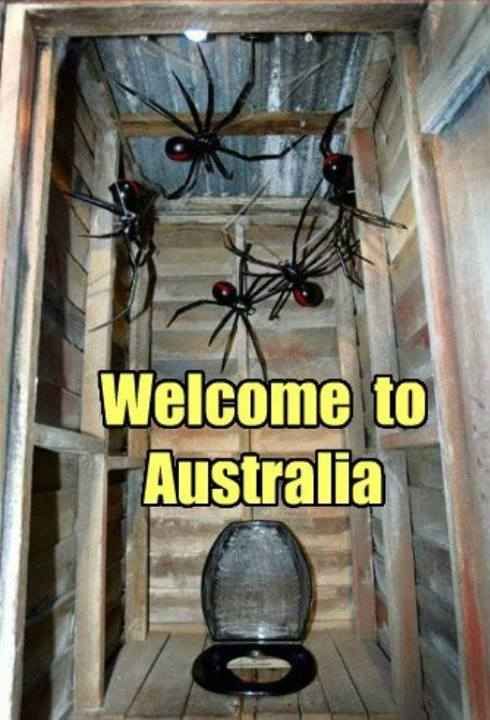@Dan From Smithville I have no idea what this one is, looks like a cross between a wasp and a grasshopper. It was on the flowers of my corn.



-
Welcome to Religious Forums, a friendly forum to discuss all religions in a friendly surrounding.
Your voice is missing! You will need to register to get access to the following site features:- Reply to discussions and create your own threads.
- Our modern chat room. No add-ons or extensions required, just login and start chatting!
- Access to private conversations with other members.
We hope to see you as a part of our community soon!
You are using an out of date browser. It may not display this or other websites correctly.
You should upgrade or use an alternative browser.
You should upgrade or use an alternative browser.
A Bug for Dan
- Thread starter John53
- Start date
Brian2
Veteran Member
Found it I think. Longhorn or Longicorn beetle maybe?
How about harlequin bug?
Identification resources online - CSIRO
What Bug Is That? The guide to Australian insect families.
Fantastic! Yes. Longhorn beetle it is. Not sure of the species. I'll have to see if I can find out.Found it I think. Longhorn or Longicorn beetle maybe?
That would be an hemipteran or true bug. A different order of insects that includes the stink bugs, assassin bugs, etc. Not a beetle. But the patterning of the harlequin bug is somewhat similar.
Your first link has another link to the Cerambycidae of Australia which is the family of the beetle in @John53 pictures.
Fantastic! Yes. Longhorn beetle it is. Not sure of the species. I'll have to see if I can find out.
Thanks mate!
I have some exotic specimens in my collection, nothing from Australia. Pictures are the next best thing. Nice shots.Thanks mate!
I have some exotic specimens in my collection, nothing from Australia. Pictures are the next best thing. Nice shots.
It was dusk, not much light so they're a bit soft.
@Dan From Smithville Found this one walking the dog this morning, only had the phone so it's a dud photo made even more dud by being heavily cropped. Seems to be a scarab, google comes up with Holotrichia Sp. It was about 10mm long.

It is a scarab. I'm not sure that Holotrichia is found in Australia, but I'll have to accept your ID, not knowing the fauna all that well. I am aware of the genus, but unfamiliar enough not to be able to recognize a member immediately. Or recognize against it. Australia has a number of genera that are unfamiliar to me. Unfortunately, this specimen possesses a common general appearance and the characters to determine them require a stereo microscope and often dissection.@Dan From Smithville Found this one walking the dog this morning, only had the phone so it's a dud photo made even more dud by being heavily cropped. Seems to be a scarab, google comes up with Holotrichia Sp. It was about 10mm long.
View attachment 69703
It is nice to see pictures of living specimens in their habitat.
It is a scarab. I'm not sure that Holotrichia is found in Australia, but I'll have to accept your ID, not knowing the fauna all that well. I am aware of the genus, but unfamiliar enough not to be able to recognize a member immediately. Or recognize against it. Australia has a number of genera that are unfamiliar to me. Unfortunately, this specimen possesses a common general appearance and the characters to determine them require a stereo microscope and often dissection.
I wouldn't accept my ID lol. Pure guess work using google image ID.
It is nice to see pictures of living specimens in their habitat.
The sad part is that at this time of year I could have shown you dozens of different examples just in the backyard. I've been actively looking for them the last month or so and this is the only one I've come across.
I'm just glad to see some examples, even if we can't ID them easily. Insects can be like that. I remember one year when grasshoppers were so plentiful, when I walked by a metal-sided building, they would jump out of the grass and hit it making a tremendous racket. Very memorable, but an uncommon event.I wouldn't accept my ID lol. Pure guess work using google image ID.
The sad part is that at this time of year I could have shown you dozens of different examples just in the backyard. I've been actively looking for them the last month or so and this is the only one I've come across.
@Dan From Smithville I'm 95% sure this is a Fungus-eating Ladybird Illeis galbula and a bonus spider I didn't even notice until I checked the photos. Heaps of them feasting on the powdery mildew on my zucchini plants.


Based on your photographs, I concur with your identification.@Dan From Smithville I'm 95% sure this is a Fungus-eating Ladybird Illeis galbula and a bonus spider I didn't even notice until I checked the photos. Heaps of them feasting on the powdery mildew on my zucchini plants.
View attachment 69767
View attachment 69769
I love finding things I didn't initially notice while taking a picture. Sometimes, they are more interesting than the subject that compelled taking the picture. Like that hovering wasp you saw in my picture of the Mydas fly. Although, that fly is still my main interest. They are not commonly seen. I have only seen that species and one other. Unfortunately, I had no camera when I encountered the other species.
Not only beneficial, but colorful and attractive to the eye (from my human standpoint).@Dan From Smithville I'm 95% sure this is a Fungus-eating Ladybird Illeis galbula and a bonus spider I didn't even notice until I checked the photos. Heaps of them feasting on the powdery mildew on my zucchini plants.
View attachment 69767
View attachment 69769
Not only beneficial, but colorful and attractive to the eye (from my human standpoint).
They're going to be overweight Illeis galbula, the powdery mildew is going crazy with the humid weather.
I've only seen that in the lab (the fungus). My experience with plant pathology isn't non-existent, but it is rather more limited to books and theory.They're going to be overweight Illeis galbula, the powdery mildew is going crazy with the humid weather.
I've only seen that in the lab (the fungus). My experience with plant pathology isn't non-existent, but it is rather more limited to books and theory.
Dumb question time that is probably unanswerable. It has been plaguing my thoughts ever since my attempt at humour, I had to stop half way through my morning tai chi. Is it possible for insects to become overweight? Or is that only a thing for vertebrates?
It is not something I have studied, but hardly a "dumb" question in my book. I don't know that it is impossible. They do have their skeletons on the outside, so there would be limited space to store excess intake as tissue, though that doesn't mean they can't have a disproportionate storage of fat for instance. The lifespan of invertebrates is often generally shorter than most vertebrates, and I think we could come up with reasons for or against the idea that includes that fact. I can tell you that the insects I have raised have food constantly available and don't have the pressure of predation to deal with. All they have to do is eat and store what they do not metabolize or eliminate. That may tell us something.Dumb question time that is probably unanswerable. It has been plaguing my thoughts ever since my attempt at humour, I had to stop half way through my morning tai chi. Is it possible for insects to become overweight? Or is that only a thing for vertebrates?
I'm curious now too. As an answer, I simply don't know.

